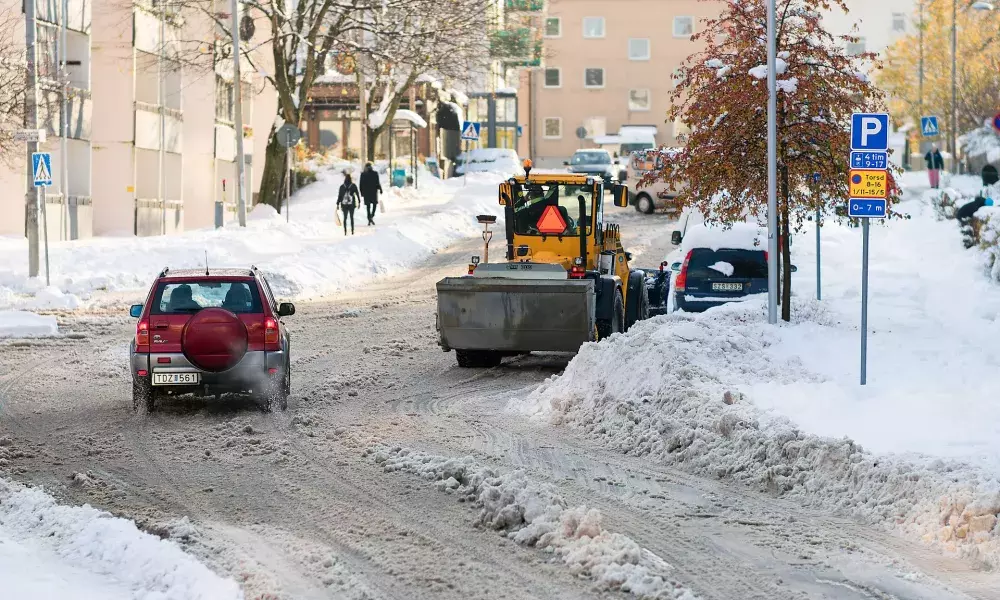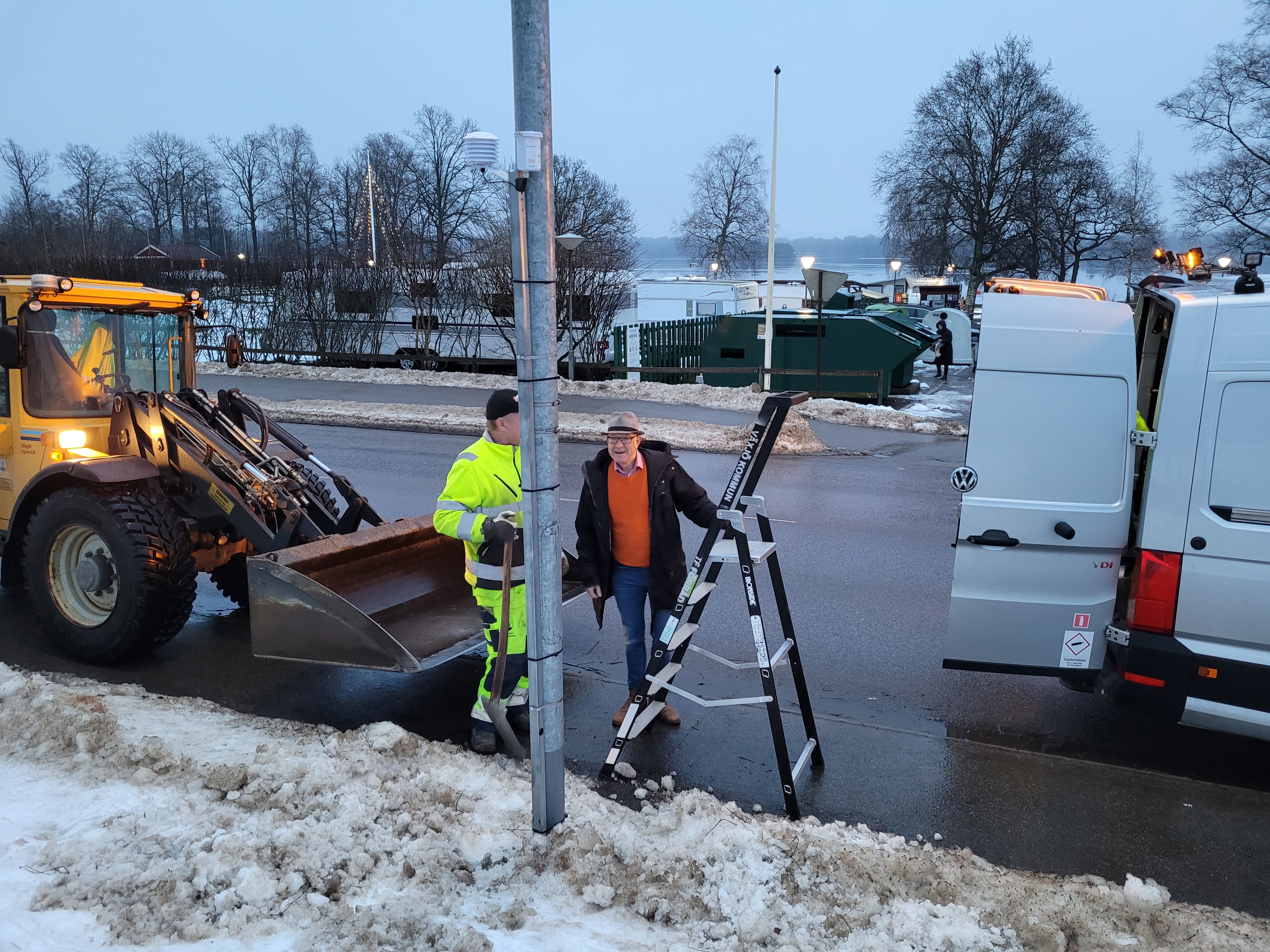
To explore the possibilities of data-driven snow clearance, the City of Växjö teamed up with Klimator, a company specialized in monitoring road conditions for winterly weather. The collaboration was set up as an Innovation Partnership, which is a type of public procurement that allows the city and the company to co-develop a solution.
By the end of the winter season of 2022/2023, we make up the balance: how did the collaboration work? What are the results, and which hurdles had to be overcome? Is innovation partnership a procurement method to be used more often in the coming years? We talked with the two key players in this project: Emil Danielsson, Head of Business Area Winter Maintenance at Klimator, and Pontus Berglund from the City of Växjö.
During the winter in Nordic cities like Växjö, citizens rely on the cities’ snow clearance services to be able to move safely in winterly conditions. But not all roads are equal after snowfall: some are busy, some less; some are more dangerous, others less so. And also, snowfall intensity is not the same everywhere in the city. Still, traditional snow clearing does not count with these differences: by the time it starts to snow, the clearing teams come out of their sheds, and clear the whole city in the same way, which is quite costly for the municipality. In this project, the city and Klimator wanted to change that. Together, they developed data-driven technology to make snow clearance more targeted, and also cheaper. IoT road weather sensors were installed to monitor the road conditions and the amount of snowfall, providing real-time updates. Based on these new data (plus its own data and weather forecasts), Klimator calculates optimal clearance routes for the city’s snow clearing teams. A dashboard shows Växjö’s dense network of roads and cycle paths, with different colors indicating precise real-time information about ice and snow conditions as well as a forecasts for the next hours. This system is now used to inform the clearance teams where and when to clear the streets. After two winters of testing, the results are satisfying: the clearing is much more targeted and timely, and the municipality saves money because it does has to go out less.
Emil Danielsson, who works for Klimator, remembers how glad he was that a city seemed to understand how innovation should work. “We were so happy that finally a city, Växjö in this case, got it: they realized that city and company must work and design together to create such innovations, and they were really going for a good solution for the whole city”. For Klimator, the project came timely. The company already had gained experience with data-driven winter clearance services on main highways, and also it was expanding their database by working with a car company to receive weather information from car sensors. But the new thing in Växjö was to go really into the nitty-gritty of the local solution: here, the ambition was to gather and use data about all kind of small local roads, including cycle tracks, and that would allow for much more precise planning.
At the very beginning of the innovation project, the city and Klimator held initial meetings to discuss how to proceed, and both sides were enthusiastic about the potential of the new solution. For the city, it would mean costs savings and better services for citizens; for Klimator it could help develop their product offer, open up new markets and offer scope for a real-life experimentation. But soon it turned out that the collaboration process was not that easy. A lot of contractual issues had to be solved, about data ownership, investments in the additional sensors and measurement equipment, the integration of the technology in the wider city IT systems. Emil Danielsson: “this was not a traditional tender procedure, and we did not always understand each other. There were many legal issues because we were still in the territory of public procurement, and the Swedish culture is to be very strict with the rules”. After several months and countless meetings, the partners finally signed a contract with 9 appendices, and it was only then that the real development work could begin. This was not exactly the co-creation process that the partners had foreseen, although the end result is satisfying for both city and Klimator.
Pontus Berglund points at the learning effect: “this was the first time we used the innovation partnership method. We were beginners, not always sure what to do and what the legal framework allowed or not. Moreover, we were in the middle of a pandemic, which did not make the communication easier”. This project was part of a bigger UIA funded project DIACCESS. Initially, when the DIACCESS project was set up, it was foreseen to do fifteen similar innovation partnership projects during the 3,5 year UIA funding period. But in the end, only three have been completed by 2023.
Is innovation partnership a procurement model to be adopted more often? Both men have their doubts. Pontus Berglund declares that: “we are very happy with the results, the data we now have is great and it has improved our service levels. But it is no wonder that so few cities use this method. It is difficult, it takes time, and also there is always the risk that in the meantime while you are co-developing the innovation, a similar product will be introduced in the market by another company, which means that you do no longer fulfil the condition that it must be a new product or service that does not yet exist”. The support of UIA funding was important for the city to start this adventure. Looking back, Pontus Berglund sees it as crucial: “without the UIA funding, we would probably not have started this, it would have been too big an investment in time and money”. Emil Danielsson also sees the downsides of the process, but for his company this was still a great initiative. “Thanks to this project, we were able to develop a truly innovative approach in which we can use very fine-grained data on local winterly conditions and translate that into snow clearing planning. For us, the experience in Växjö is a showcase that helps us to offer similar solutions to other cities”.

About this resource
The Urban Innovative Actions (UIA) is a European Union initiative that provided funding to urban areas across Europe to test new and unproven solutions to urban challenges. The initiative had a total ERDF budget of €372 million for 2014-2020.
Similar content




